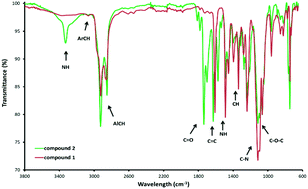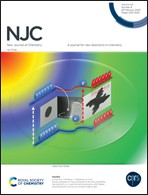Improved targeting for photodynamic therapy via a biotin–phthalocyanine conjugate: synthesis, photophysical and photochemical measurements, and in vitro cytotoxicity assay
Abstract
In this study, the peripherally biotin-substituted zinc(II) phthalocyanine (Pc2) was synthesized as a photosensitizer for the treatment of cancer by photodynamic therapy. The photophysico-chemical properties of the zinc(II) phthalocyanine-bearing mono-biotin and three branched polyoxyethylene groups were studied in DMSO. The photodynamic activities of this compound were tested on HeLa cervical carcinoma cells and HuH-7 human liver carcinoma cells. The dark toxicity and photosensitizing effect of the conjugate were compared to those of amino-functionalized zinc(II) phthalocyanine (Pc1) to determine the effect of the biotin group on the photodynamic activity. According to the results, Pc1 showed good photodynamic activity reaction against HeLa and HuH-7 cancer cells. Although the results of the photochemical and photophysical data of Pc1 and Pc2 were close, the in vitro studies of these compounds (1 and 2) have shown that the biotin-substituted conjugate (Pc2) more effectively decreased cell survival than the non-biotin-bearing derivative (Pc1) due to the targeting effect of the biotin. Furthermore, the apoptosis ratio of 2 by the HeLa and HuH-7 cells was detected by flow cytometry via Annexin V/PI double-staining assay. The percentages of the late apoptotic cells were 3.5% and 0.4% in the control groups of HuH-7 and HeLa cells, respectively. The late apoptotic cells increased under light conditions in both HeLa (63.9%) and HuH-7 (83.6%) cells compared to dark conditions (HuH-7, 1% and HeLa, 0.4%). The cellular uptake of Pc2 was relatively high (34.5-fold in HuH-7 and 459 fold in HeLa cells) and localized in the cytoplasm in different cancer model cells. Moreover, the Pc2 treatment and illumination strictly reduced the cell colony forming capacity. The photodynamic activity of the biotin conjugate can be related to the high cellular uptake and/or singlet oxygen generation yield of this photosensitizer.



 Please wait while we load your content...
Please wait while we load your content...